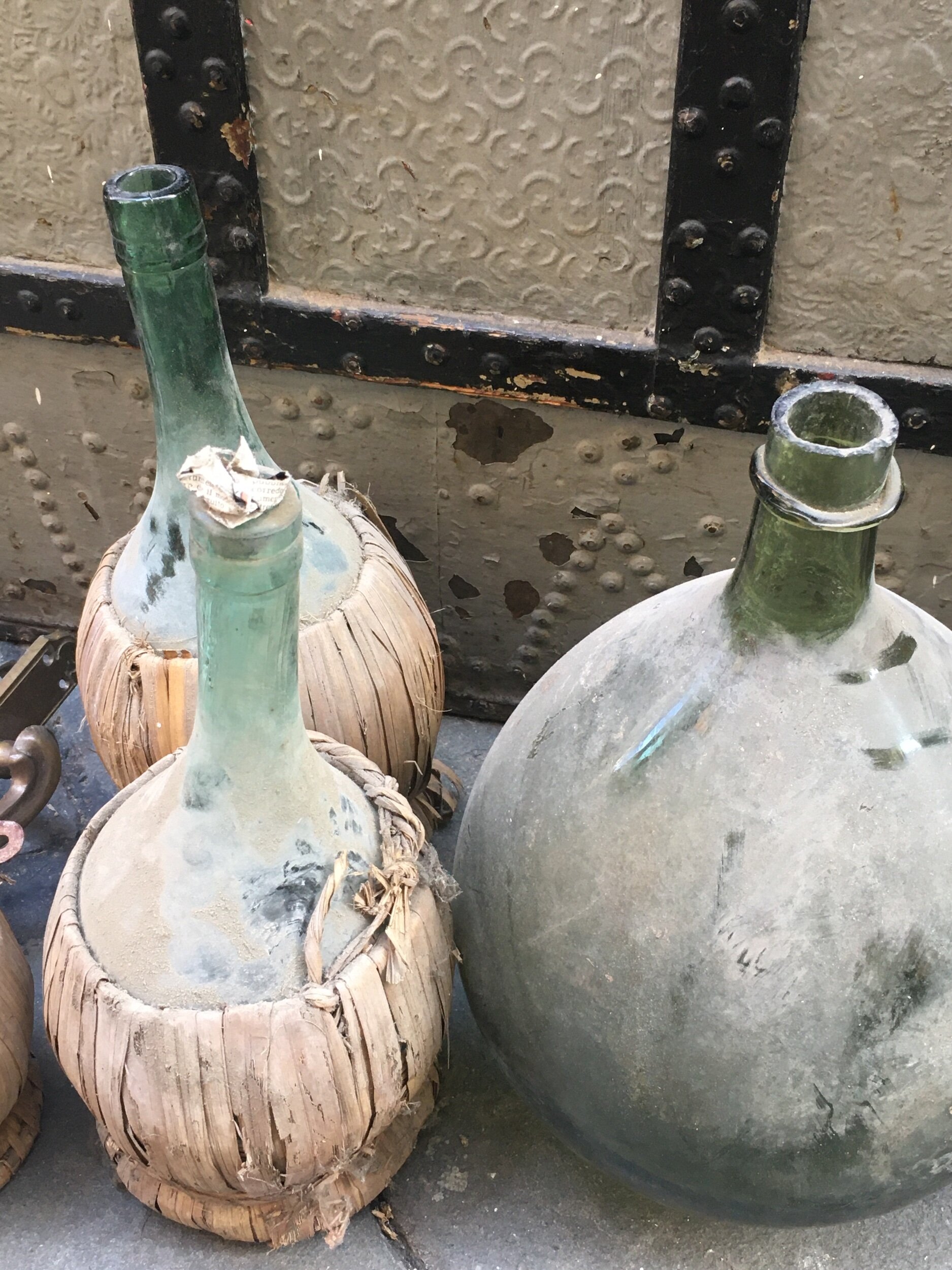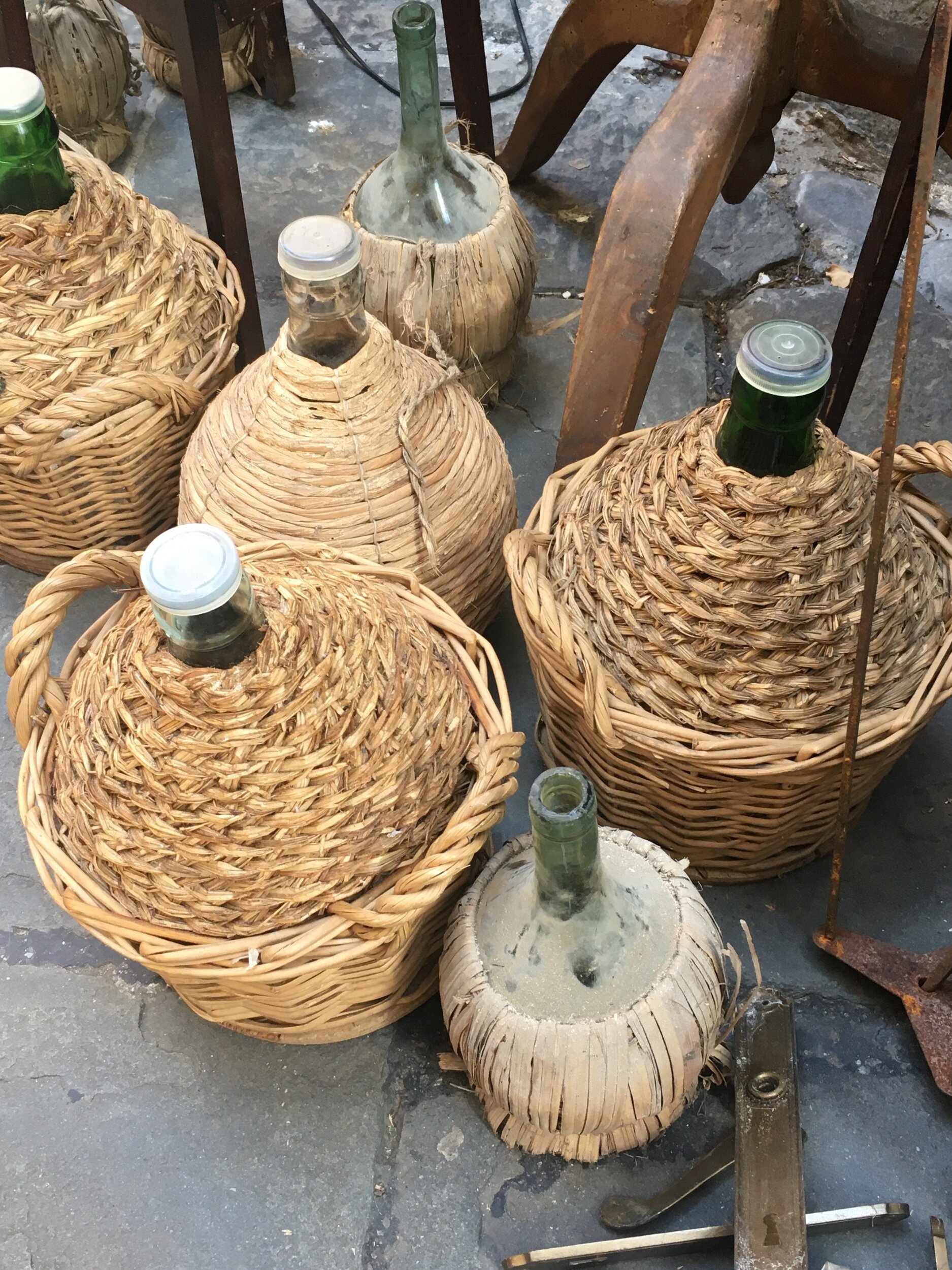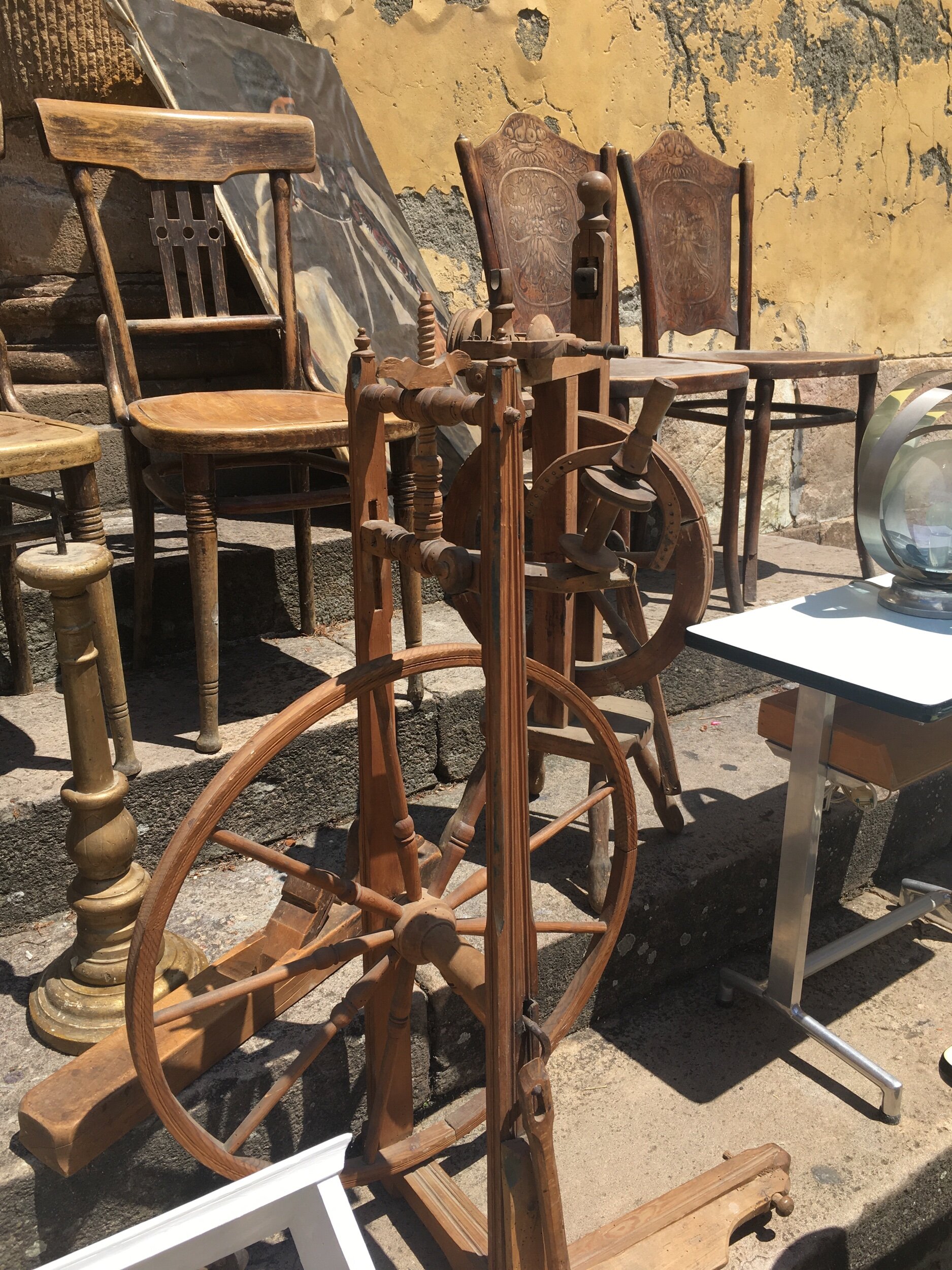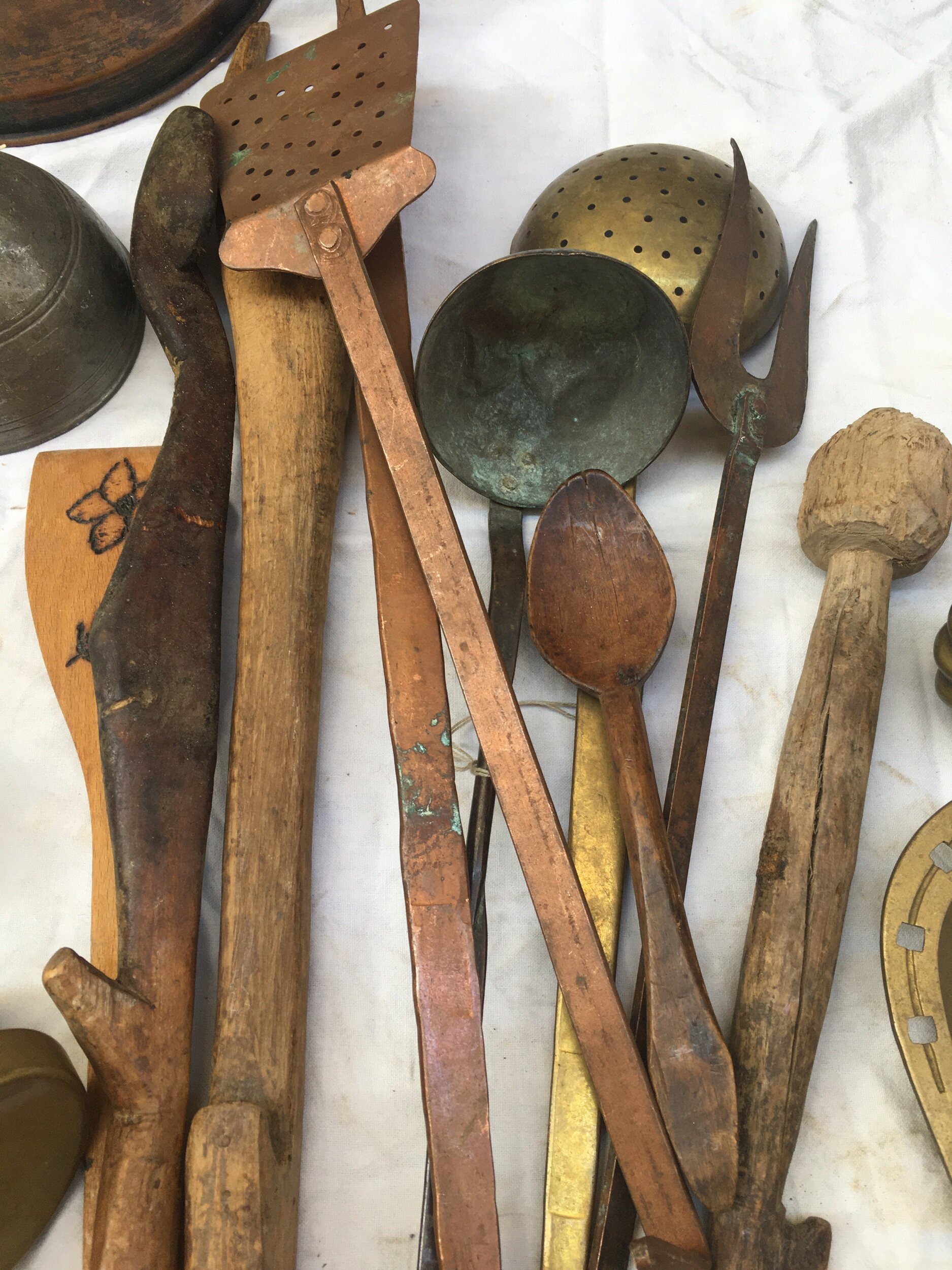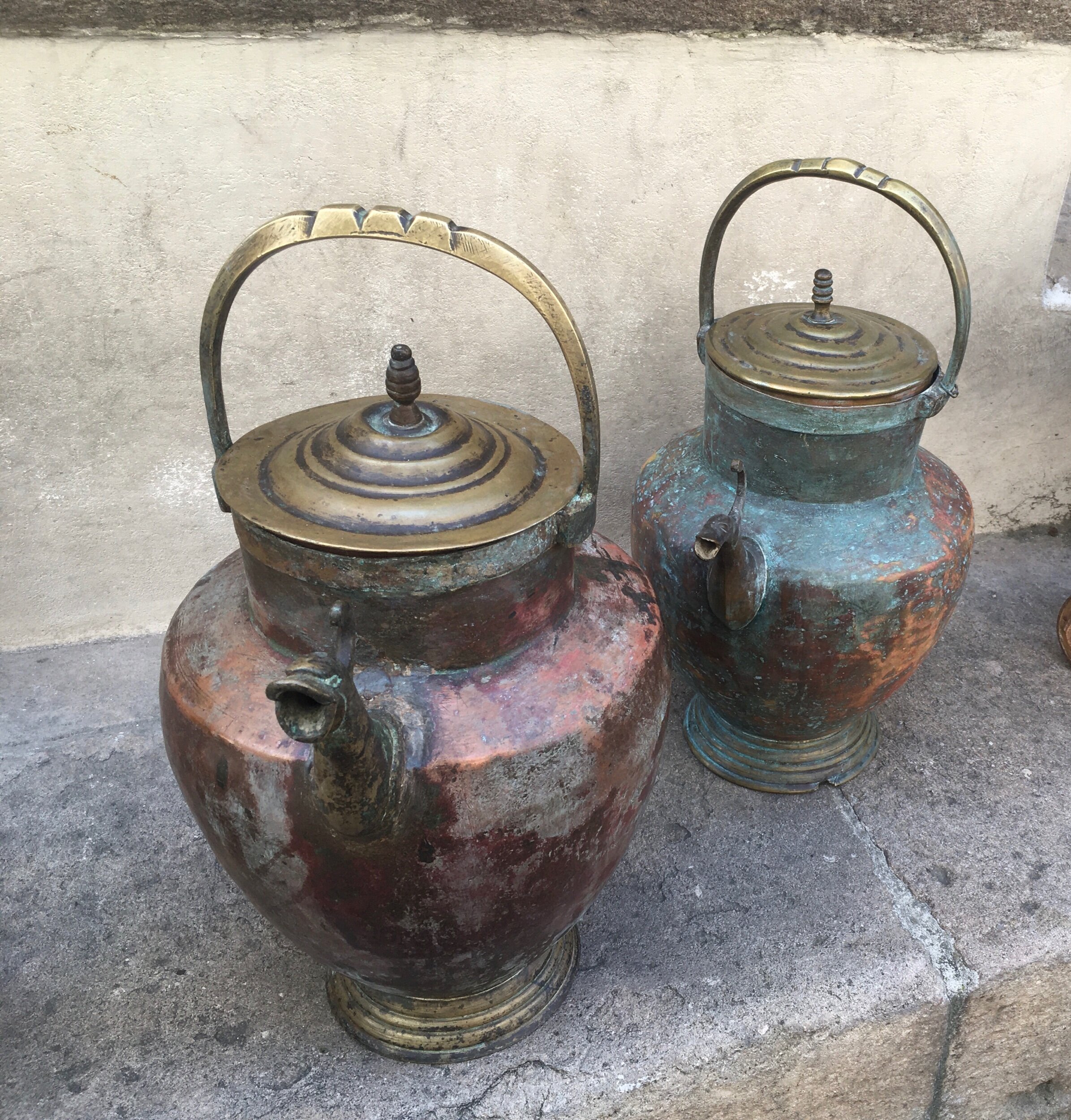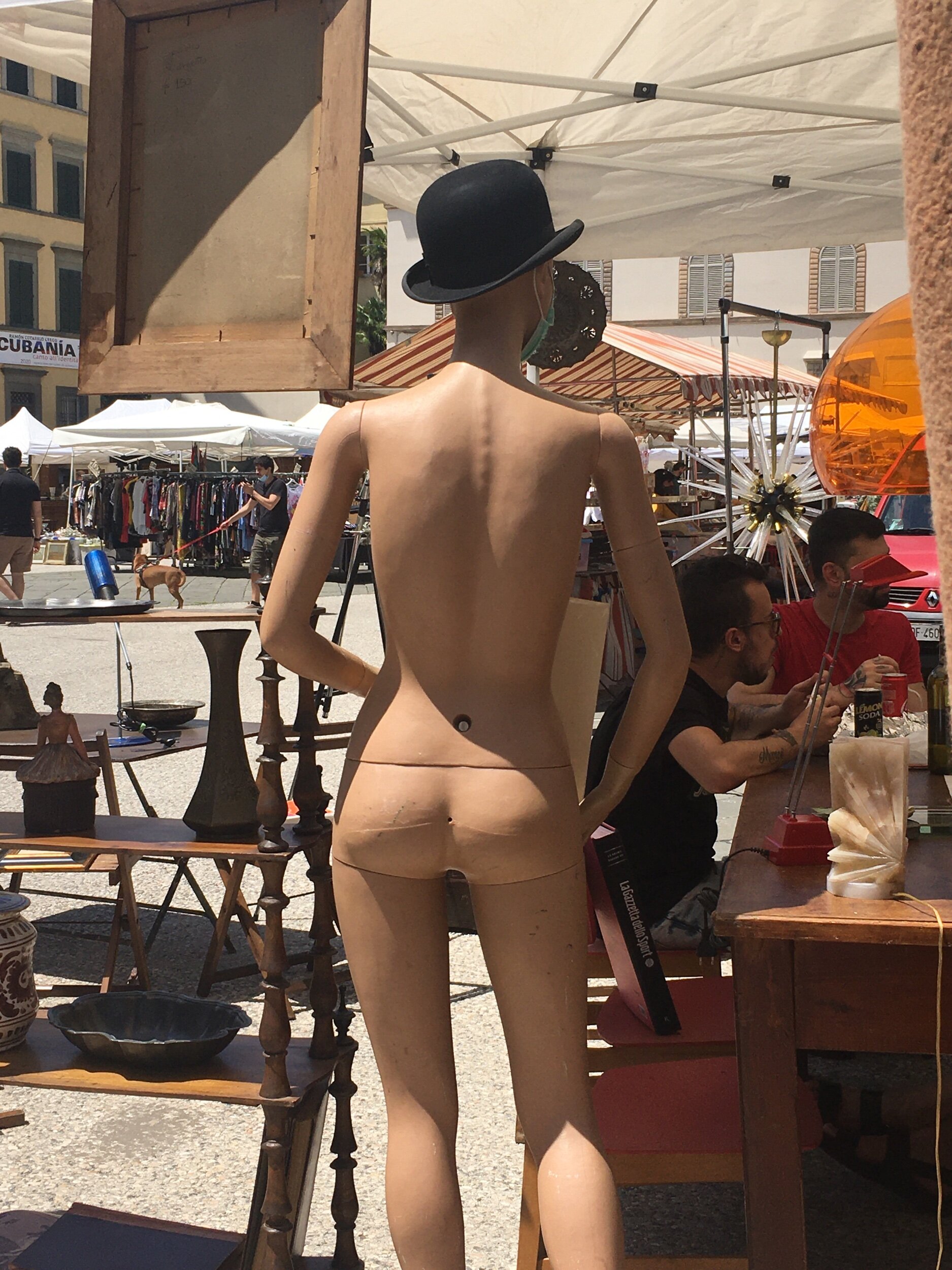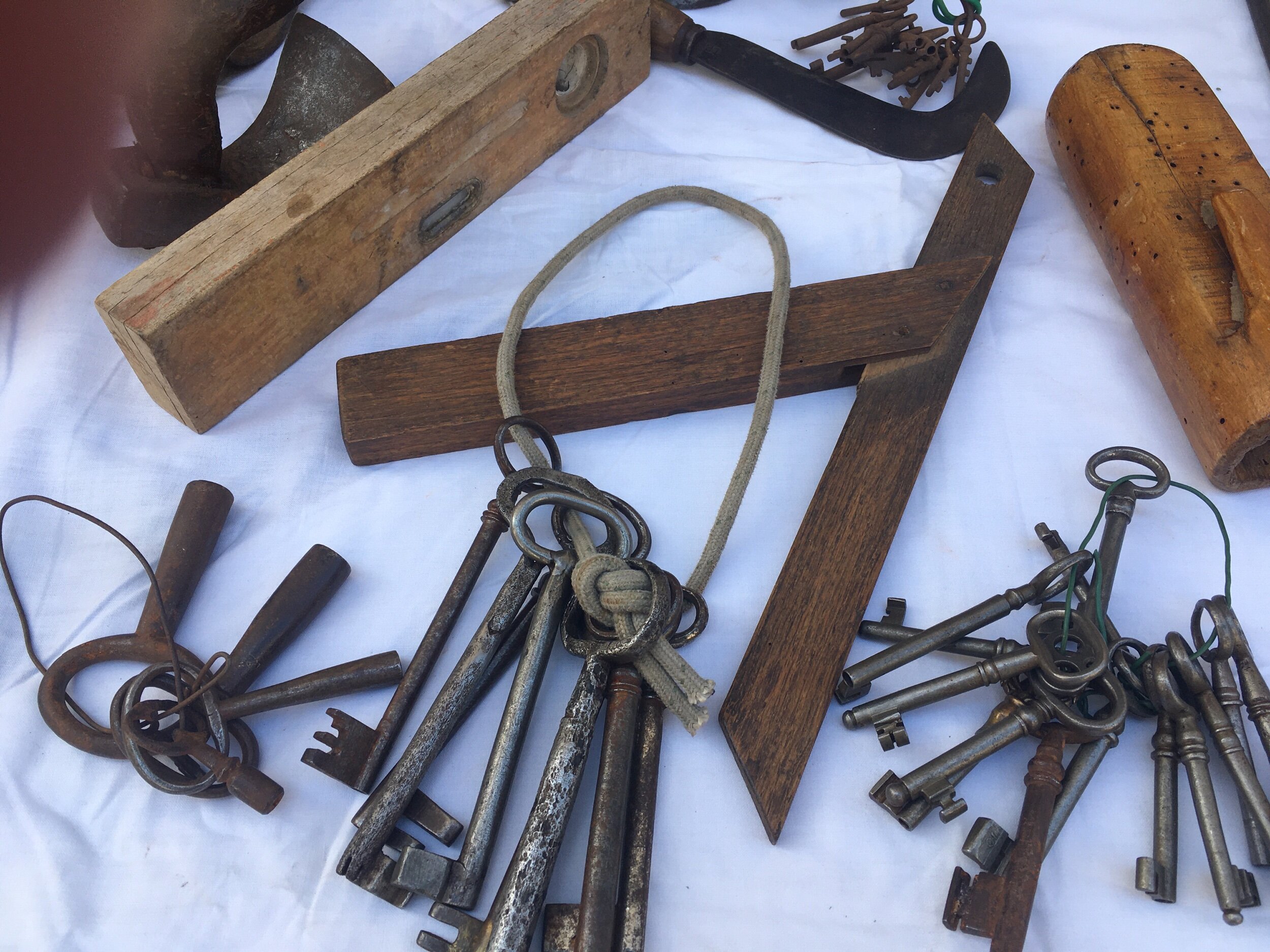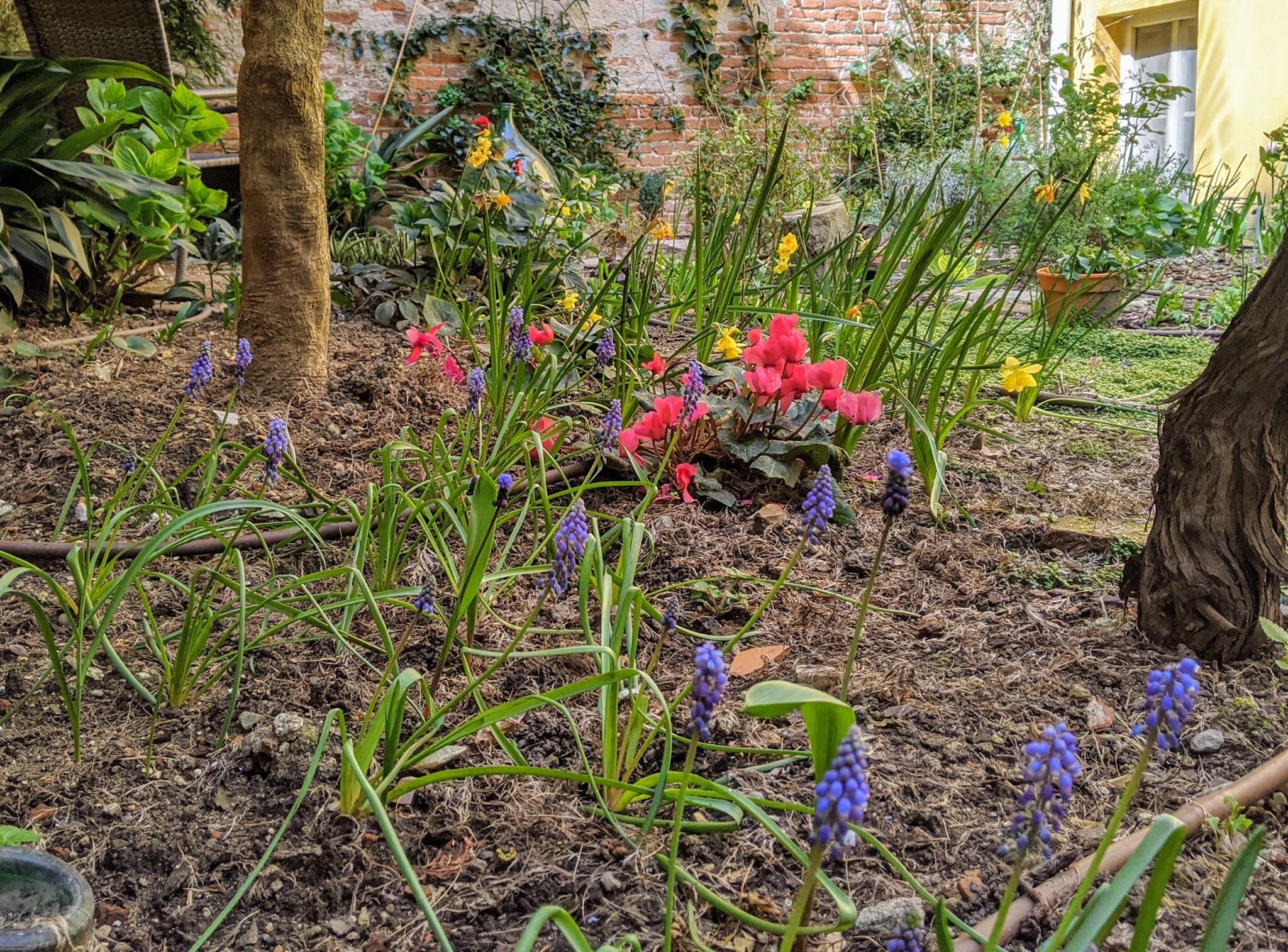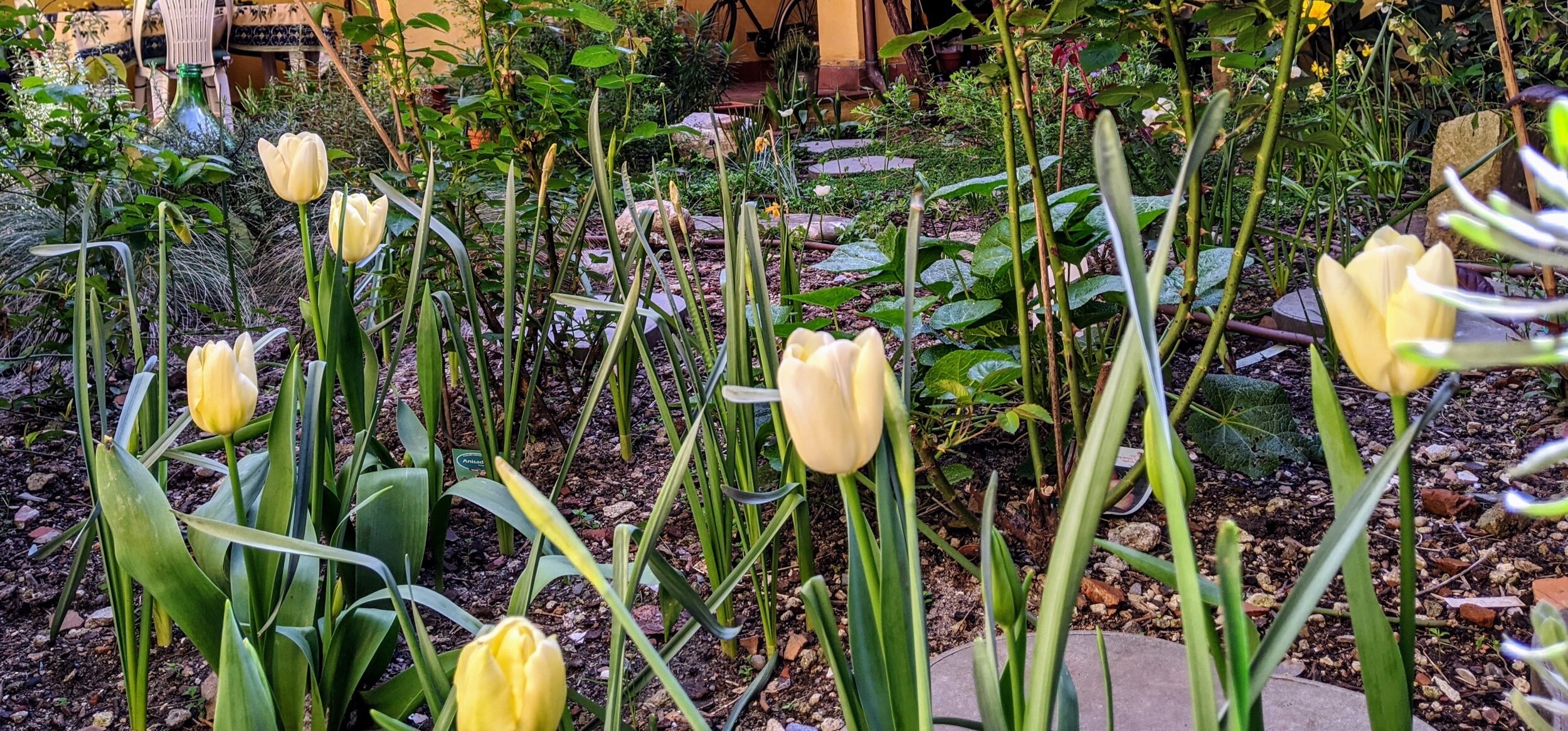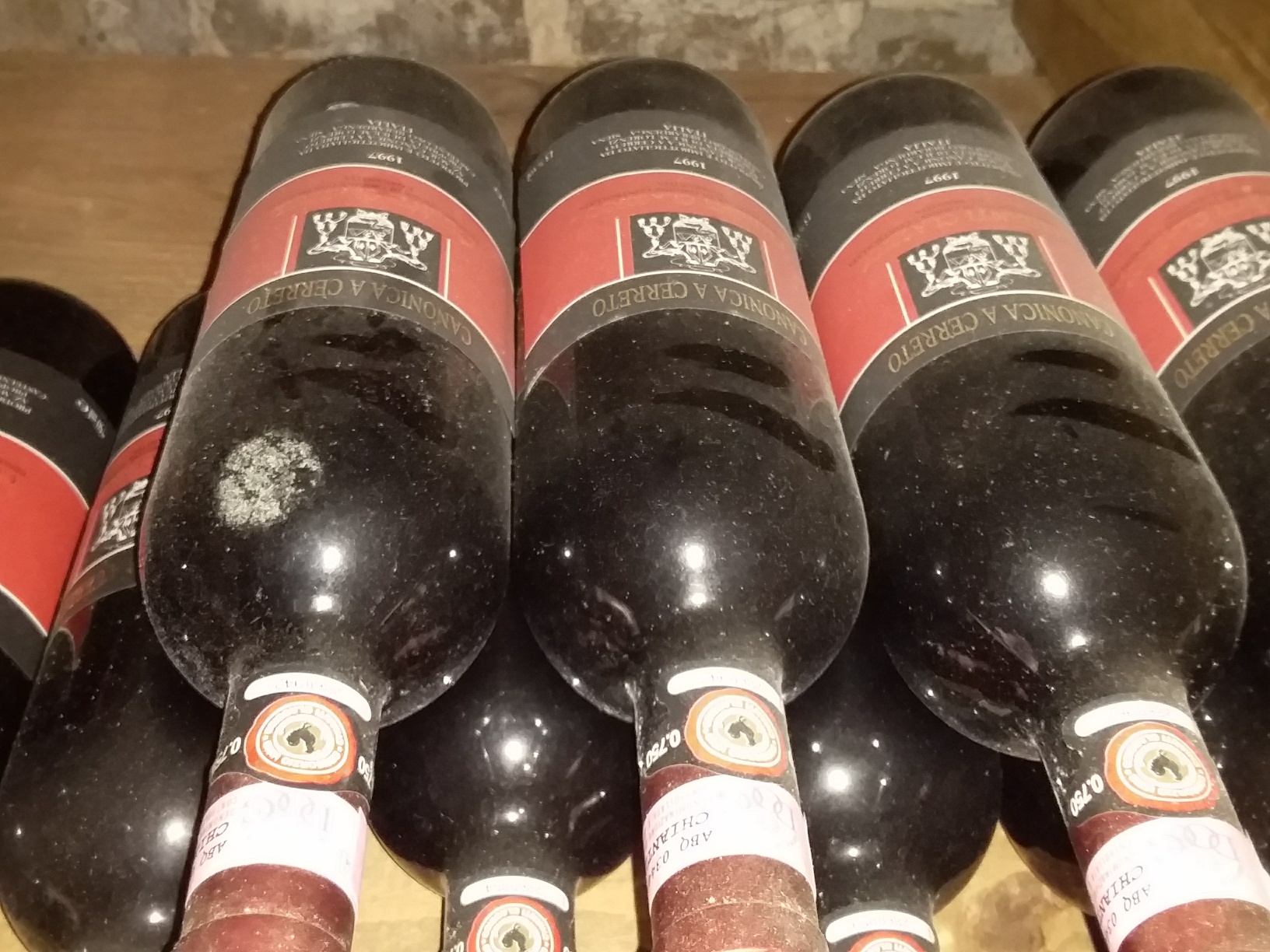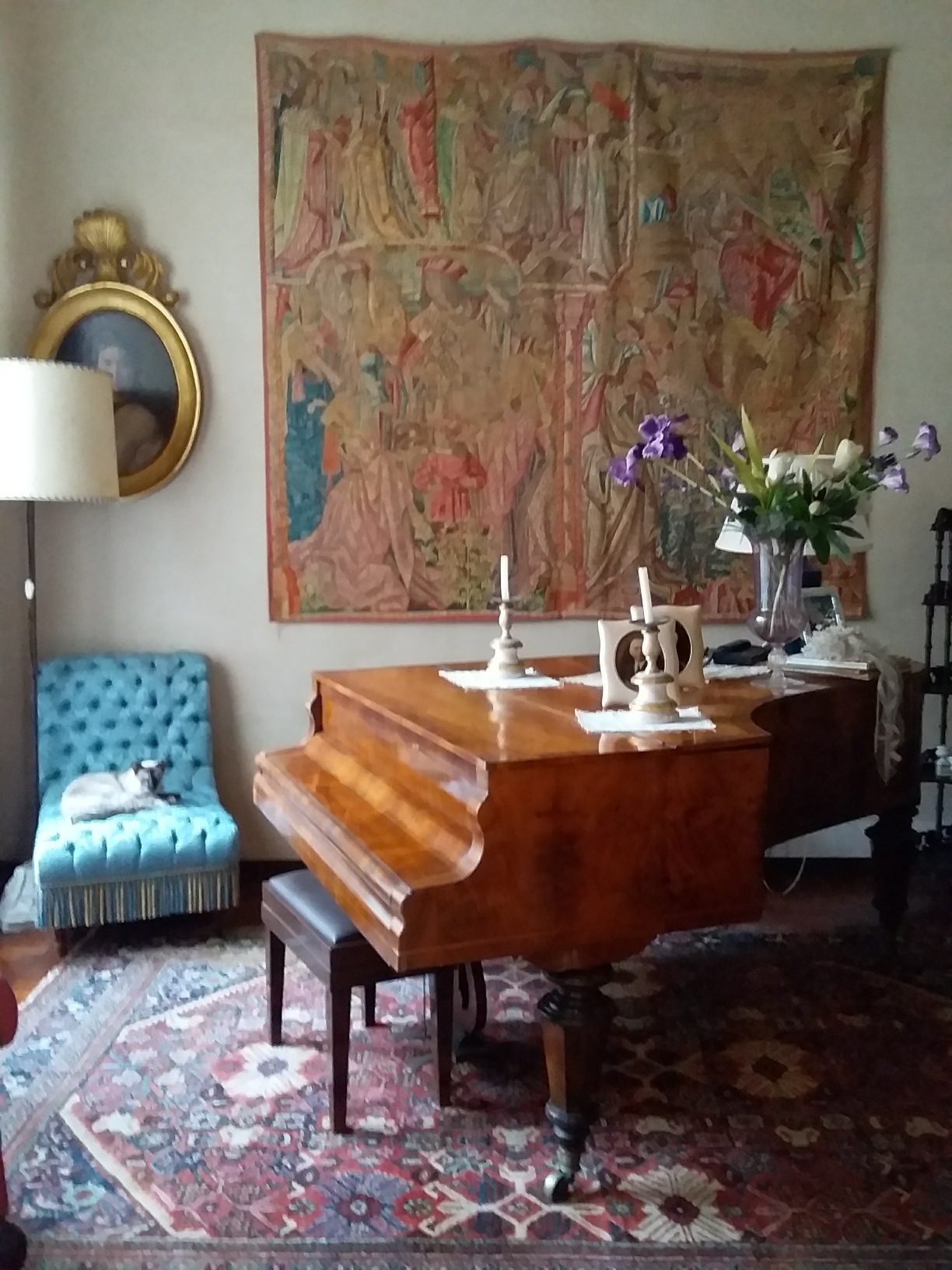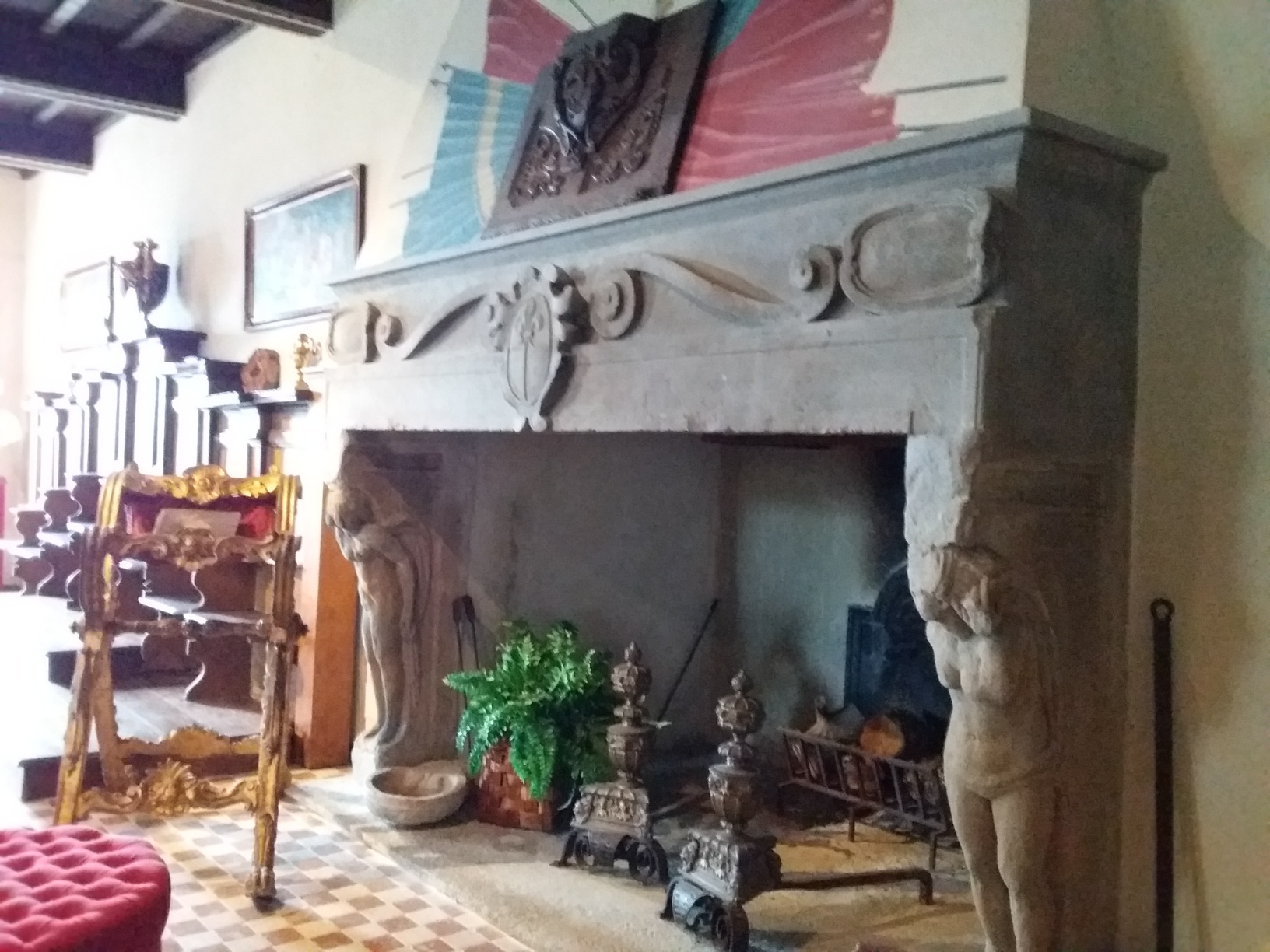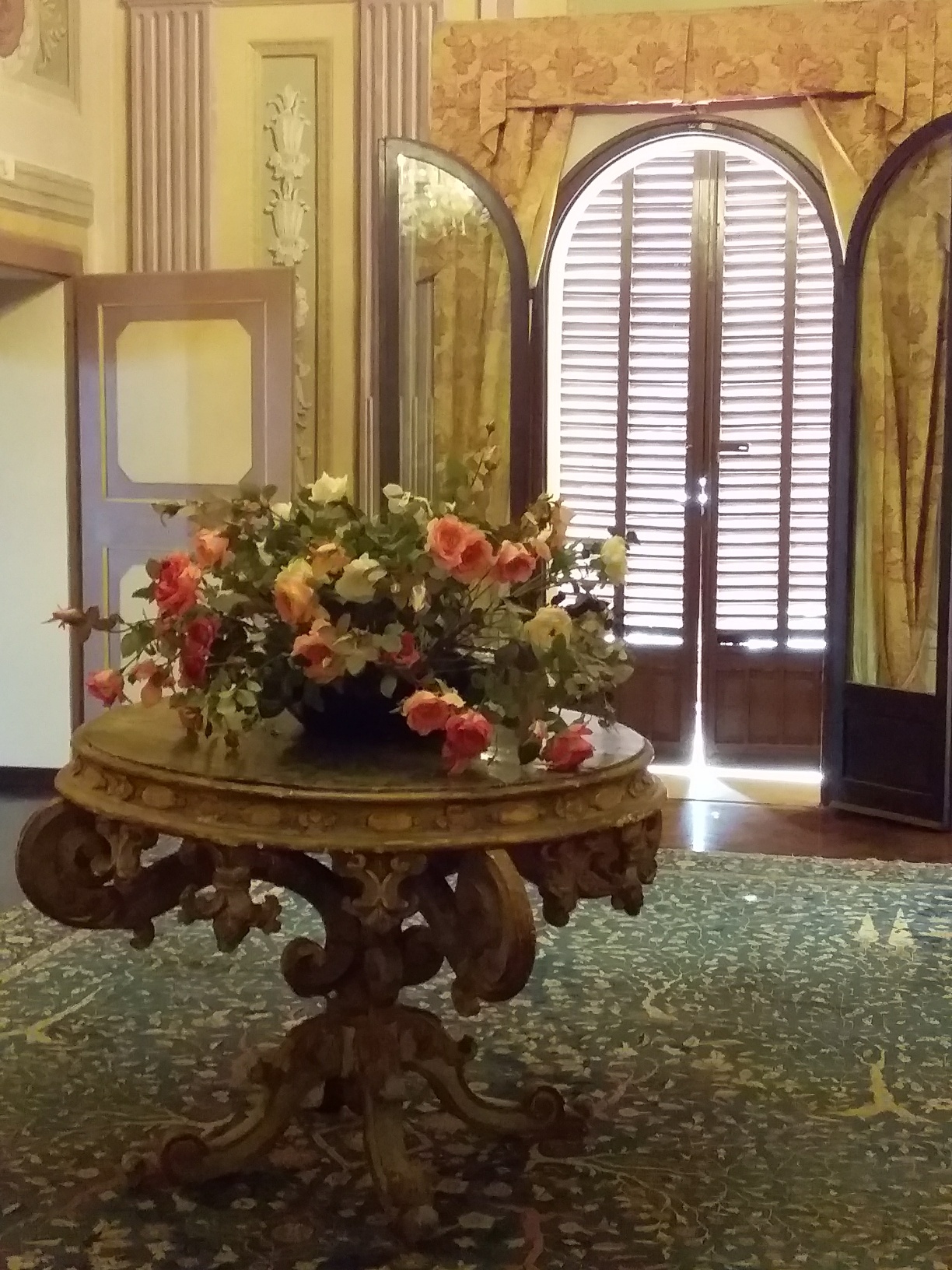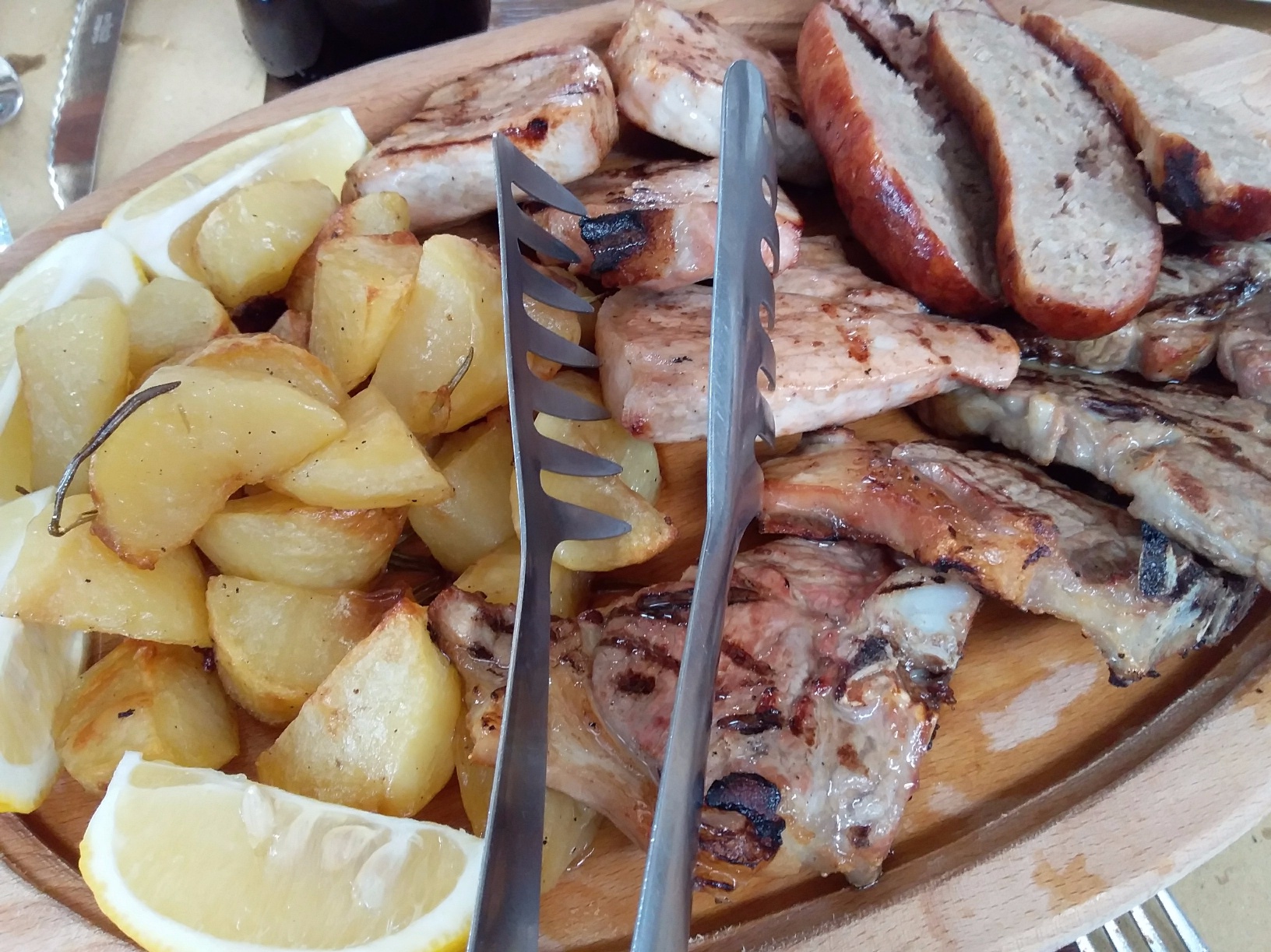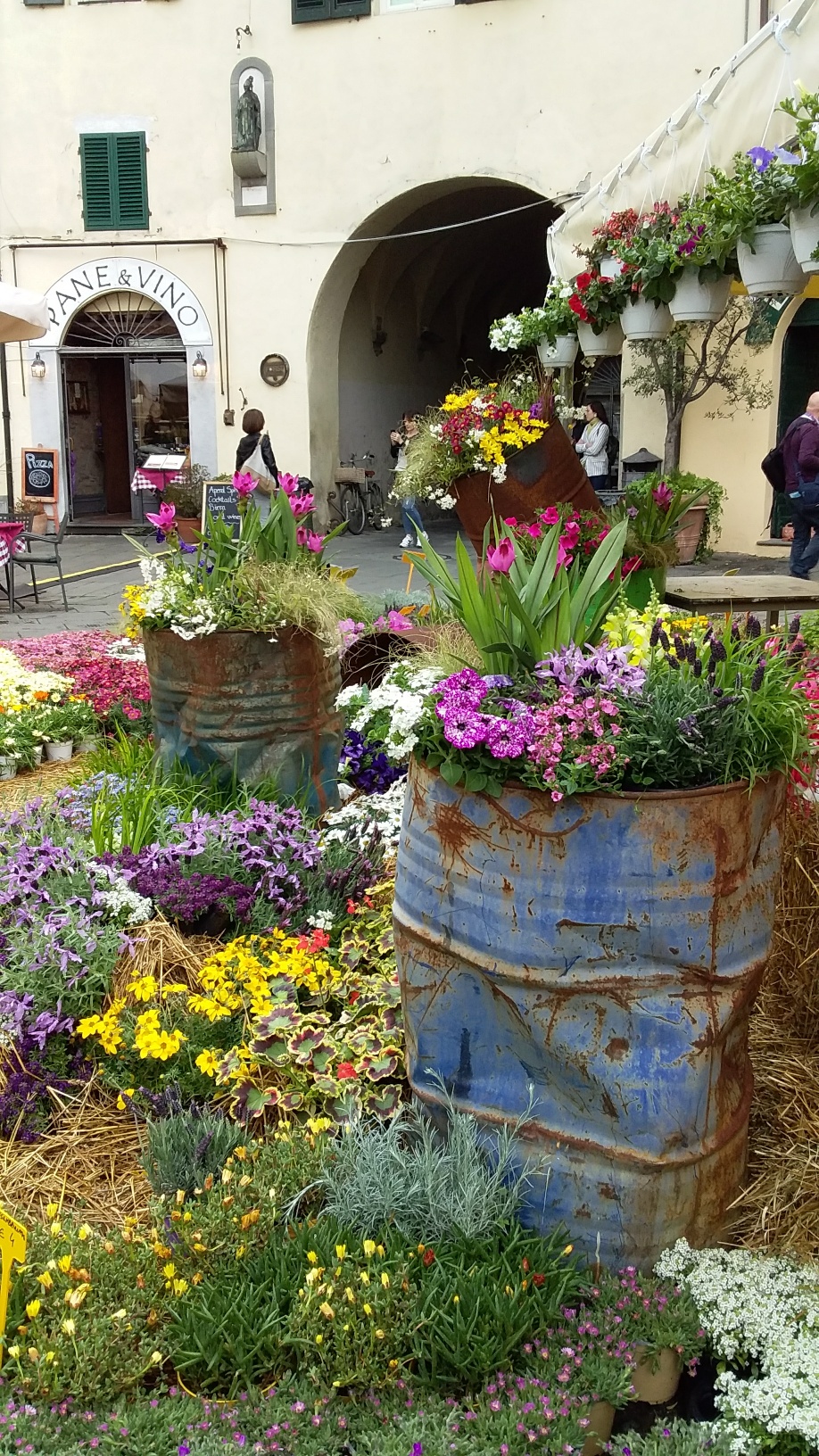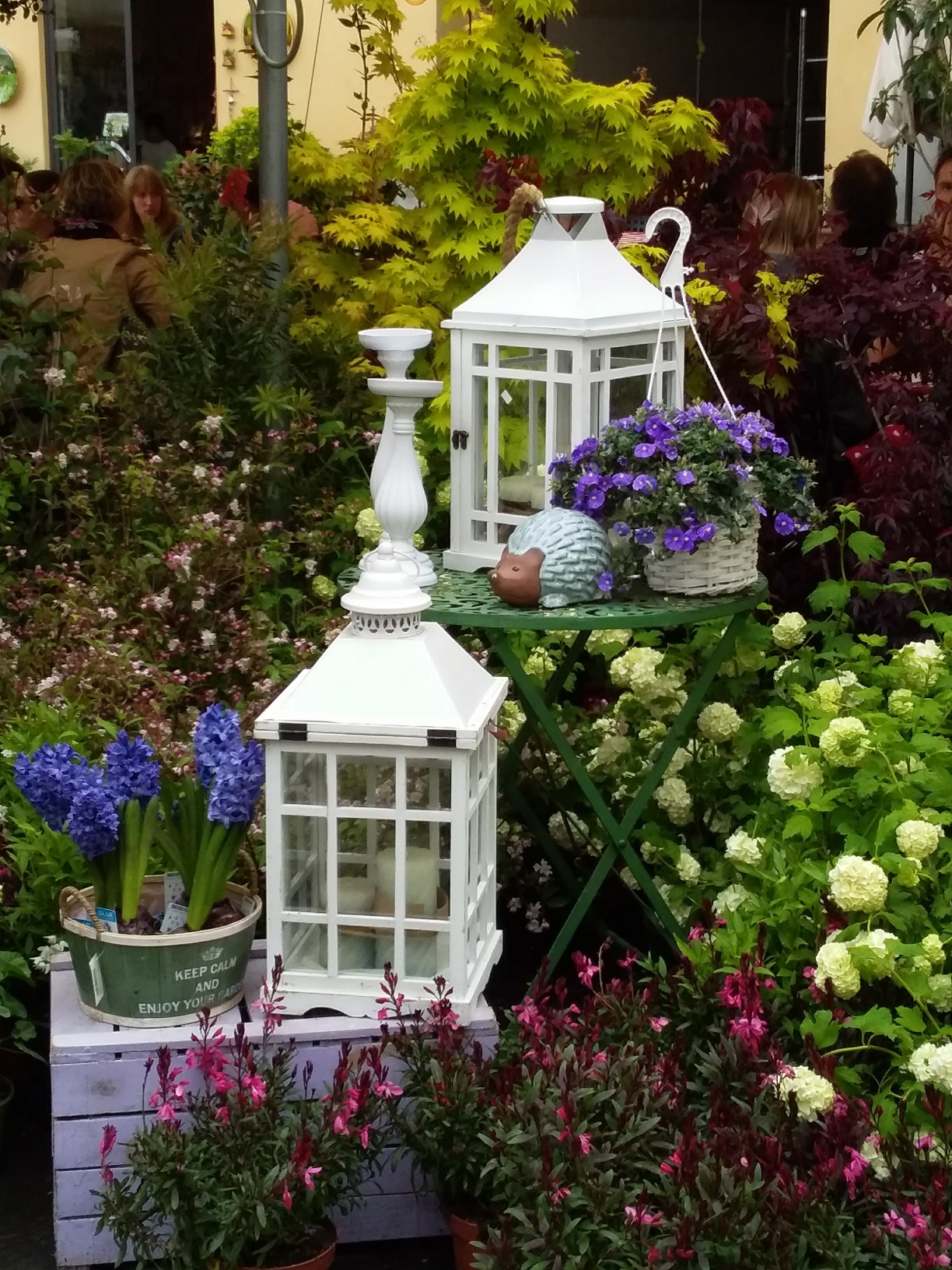The Antiques Market Returns To Lucca
One of the many things missing during Italy’s COVID-19 lockdown was the monthly antiques market in Lucca. The market, always held on the weekend that includes the third Sunday of the month, is a local institution and something to look forward to for many people. But in the months of February, March, April and May 2020, the antiques market, along with so many other activities, was canceled.
The excitement was palpable then when it was announced that the market would resume in June. And what a return it made, with its many bancarelle (stalls) and vendors selling everything from piles of old skeleton keys to old record albums to vintage linens, demijohns, cameras, dishware, furniture and much, much more.
Peeking through the window of an antiques store on Via del Gallo
The market flows through several interconnected piazzas and down the surrounding side streets. Even the antique stores on Via del Gallo participate.
The crowd was smaller than usual this June but still full of enthusiasm. Almost all had their masks in place and seemed happy to cooperate with the vendors who provided hand sanitizer to use before touching their wares.
It seemed everyone was happy just to spend a Saturday or Sunday morning browsing the market underneath clear blue skies. Such a relief after the long period of lockdown.
Long before I moved here to live, I used to plan my trips to Lucca carefully, making sure that each included at least one day of the market. Back then I used to wander past the stalls and daydream about the things I would buy if only I had an apartment here.
These days I do have an apartment in Lucca, although it’s too small to buy any of the large furniture pieces that the market is known for. Happily, I have purchased a few things - an old, green glass demijohn (once used to store wine, now it holds the cork from each bottle of wine that I open), a pretty set of cordial glasses, an apperitivo fork, a vintage tablecloth.
A demijohn like these looks perfect in my living room.
Each of these items is special to me, but the greatest joy is not from the things themselves but from the memories of walking through the market, listening to the sound of the Italian language, bartering a bit, stopping at a cafe for a coffee while people watching, and enjoying the musicians who often play at the market. What a joy to have the market return. What a joy to live in Lucca! -post by Joanne
Classical music provides a soundtrack for shoppers. This talented musician can often be found playing in the piazzas of Lucca.

